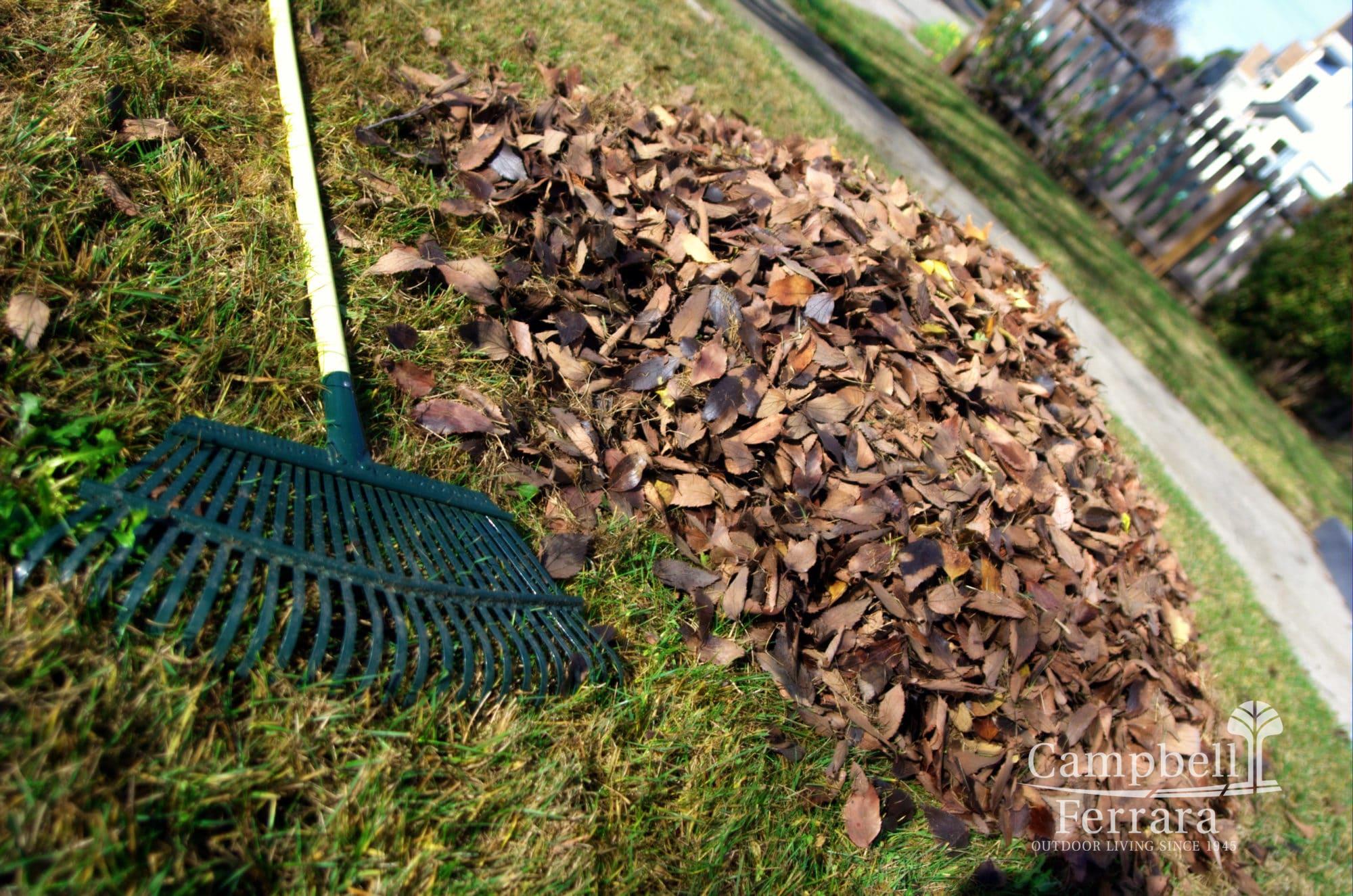
Raking or blowing the leaves in the fall is a job that many homeowners simply take for granted. However, some experts believe that cleaning up all those leaves that have fallen on the lawn isn’t necessary or even such a good idea. Here are pros and cons for raking up fallen leaves:
Pros
When many homeowners rake up their leaves, they put them in black plastic garbage bags, and these millions of leaf-stuffed, black plastic bags end up in landfills. Others rake the leaves into the streets or into the gutters. When the leaves fall into the gutters, they find their way to waterways. They overload the water with nitrogen and phosphorus, which stimulates algae to grow, which in turn robs the water of oxygen and kills both aquatic plants and animals.
Fallen leaves provide winter shelter for bugs that are beneficial to the lawn and garden.
Leaves also protect plants from frost, especially in dry climates. Even in humid climates, a layer of leaves over the roots of a plant keeps the moisture in the soil from evaporating and the roots from drying out. Even when the temperature drops to below freezing, the ice protects the roots and actually keeps the soil temperature stable.
Fallen leaves are full of the nutrients they took from the trees. As the leaves decay, these nutrients return to the soil.
Cons
Letting leaves stay on throughout the fall and winter robs the grass beneath of sunlight. A lot of leaf litter turns into a sodden mess over the length of the winter, especially if the lawn is found in a wet climate. These soggy leaves also contain diseases, though they’re usually specific to the trees and usually go dormant in cold weather. Some lawn experts claim it’s best to rake up these clumps of leaves and get rid of them before the diseases wake from dormancy during the warmer months.
Too many leaves over the roots of a perennial plant can cause it to rot. As fallen leaves shelter good bugs, they also shelter bad bugs. Snails and slugs also lay their eggs in leaf litter.
Solutions
Experts claim that a homeowner can put fallen leaves in a compost pile or take them to a place where they can be given to people who want leaves for their own compost pile. Large masses of leaves can be raked away from places where problems might occur, such as from around perennials and shrubs that are not very disease resistant such as rhododendrons and roses.
Some claim that the best thing to do is to shred the leaves and scatter them over the lawn and over the roots of plants. This way they won’t form those soggy, disease and bug-ridden mats. A light layer of leaf mulch decays quickly and allows some light and air into the lawn while releasing its nutrients into the soil. Lawn experts say the best way to shred leaves is to run a lawn mower over them or pick them up with a mulching machine that shreds them and collects them in a bag.
You can also find a reliable landscape company that includes leaf removal in your annual maintenance program or fall cleanup.






